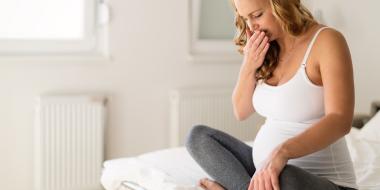The pregnant body is mesmerizing. It goes through so many extraordinary changes in order to support the growth of a whole new life. Every organ and system is involved, including the skin, uterus, lungs, spine, muscles, ligaments, kidneys, heart, and blood vessels. Considering the extent of your body's contribution, it is unrealistic to think that it will quickly and easily bounce right back to its pre-pregnancy state soon after birth. Instead, you can expect some common temporary and permanent body changes after childbirth.
Increased shoe size
Many people are not aware that foot shape and size can permanently change after pregnancy, but research shows this to happen in 60-70% of women. It is thought to be due to the flattening of the foot arch from the extra weight of pregnancy, and increased laxity of the joints.
Skin marks and scars
It is common for stretch marks to form on the abdomen, breasts, thighs, hips, and buttocks during the third trimester of pregnancy. These are reddish-purple bands of scar tissue caused by rapid stretching of the skin and hormonal changes. They generally fade over time but often do not completely disappear. Staying hydrated can help. Melasma gravidarum or chloasma, also called the mask of pregnancy, is another common occurrence. Generally, this disappears after birth; however, in rare occurrences, these dark, discolored patches of skin can become permanent.
Hair loss
It is well-known that during pregnancy, the hair on your head becomes full and luxurious. This is not due to increased number of hairs grown, but rather due to an increase in the length of the growth cycle as a result of rising estrogen levels. This means that the hair is falling out much more slowly. After birth, estrogen levels drop and the hair returns back to its normal growth cycle, resulting in a sudden loss of hair. Although this can be concerning, it is normal, and after several months you should regain your pre-pregnancy mane.
Post-baby belly
The uterus is still enlarged after birth and does not return to its normal size until two weeks postpartum. Contraction of the uterus as it shrinks can cause discomfort or "afterpains," which are intensified with breastfeeding due to the release of the hormone oxytocin. Once the uterus has returned to its normal size, you still can’t expect an immediate flattening of the belly because the abdominal wall has been stretched and weakened. As well, diastasis recti is a common condition where the abdominal muscles separate during pregnancy. This separation can be minimal or extensive and it can take 6-8 weeks to return to normal.
Vaginal bleeding
It is completely normal and expected to have light to moderate amounts of bleeding and discharge following childbirth. This is called “lochia” and it is made up of blood, uterine tissue, and bacteria. In the first 3 days after childbirth, lochia is bright to dark red (lochia ruba); it turns pink or brown by day 3-4 (lochia serosa), and can continue for 10 days before it turns white or yellowish (lochia alba). In total, this can continue for up to 6 weeks postpartum. Bleeding does become concerning when you notice excessive amounts (i.e. you saturate a sanitary pad within 15 minutes to 1 hour), clots larger than a golf ball, foul odour, or red blood past the 4-day mark. In these cases you should consult with a health professional.
Urinary incontinence
After having a baby, many women experience urinary incontinence, which may mean rushing to the toilet or leaking when laughing, coughing, or exercising. This is generally due to weakening of the pelvic floor muscles and possibly damage to the pelvic nerves. Weak pelvic floor muscles can also result in bladder, uterine, or vaginal prolapse — in other words, these organs fall out of their normal position. Luckily, there are pelvic floor physiotherapists out there that specialize in these issues, and they can help you create a treatment plan for restoring optimal bladder function.
Vaginal shape and size
A question which many women and their partners want to know is whether or not the vagina will ever look or be the same after birth. The truth is no, the vagina will have some permanent changes, but unless there is significant birth trauma these changes will be minimal and not impair function. Immediately after birth, however, the vagina and perineum (the area between the vagina and anus) will be quite stretched, swollen, and possibly bruised. It will take 6-10 weeks for the vagina to return to its near pre-pregnancy shape and size. Resuming sexual activity after birth can take some time as you want to wait for postpartum bleeding to stop, incisions to heal, and to feel physically and emotionally ready. If you have had an episiotomy or perineal tear, this area is also likely be tender for some time. So take it slow, be patient, and set reasonable expectations. As well, lubricants can be helpful as vaginal dryness is common in the postpartum period due to the hormonal changes.
Breast milk leakage
Breast engorgement may cause painful breasts during early lactation, and it is common for milk let-down to occur at the most inconvenient of times — at a grocery store when you hear the cry of another baby, or in social situations when you are talking about your own baby. It is also common for milk to leak during sexual intercourse. Nursing pads are made for this!
There is often a feeling of urgency after birth to get the pre-pregnancy body back, but it has gone through some substantial changes over 9 months to support a growing baby and it needs time to recover. So be kind to yourself and your body and remember the amazing miracle it has gone through!
*Originally published November 26, 2016









